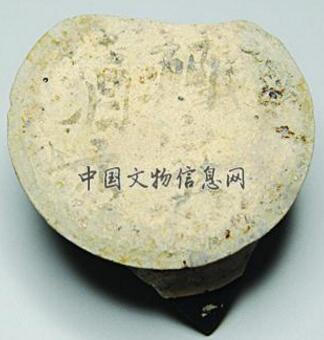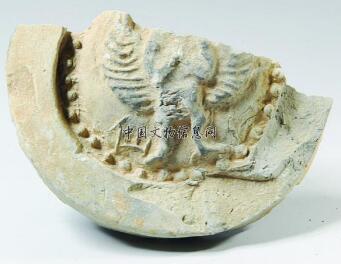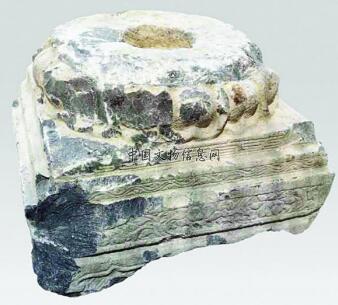Information
New Achievement Found in the Archaeological Excavation of the Eastern Market Ancient at ancient Chang’an city of Sui and Tang dynasties in Xi’an
Summary: From April 2016 to December 2017, Shaanxi ArchaeologyTeam of Institute of Archaeology, Chinese Academy of Social Sciences conducted an archaeological excavation to the northeastern part of Eastern Market at ancient Chang’an city in Xi’an. Between the Sui
From April 2016 to December 2017, Shaanxi Archaeology Team of Institute of Archaeology, Chinese Academy of Social Sciences conducted an archaeological excavation to the northeastern part of Eastern Market at ancient Chang’an city in Xi’an. Between the Sui and the Tang Dynasty, two markets named East and West, gradually developed into famous commercial centers in the city. The East Market catered mainly to the local population, and the West is much more international. Before 2016, the team had conducted comprehensive exploration and small-scale excavation to the eastern and middle part of the East Market, with an area of 2900 square meters, 173 different kinds of remains had been found, with significant academic values to understanding the layout and structure of the Eastern Market in the Sui and Tang dynasties; and the content of commercial and handicraft industries.

Aerial photo of Remain 2015TCDT1
According to the exploration and excavation, the south part of the platform of the Eastern market ruins was higher than the north. Besides the pond remains in the north part and the main street (in the direction of the east and west) in the middle part, 8 road remains, 8 ditches, 5 house foundations, 2 workshops remains, 16 brick wells, 19 earthen wells, 2 cellars, 111 ash pits were found as well. The pond was the free life pond mentioned in the literature, located at the northwest, the streets, ditches and other remains were distributed at the south slope.
The free life pond was 216 meters’ long from east to west, 72 meters’ wide from south to north, and the bank was rammed by earth. Inside the pond, accumulation was about 2 meters’ thick, and a large amount of brick fragments was accumulated near shore.
About 160 meters south of the free life pond, was the street at the north of the main “井” shaped street of the Eastern Market in the Sui and Tang dynasties. The street had not been excavated, but according to the modern subgrade profile, archaeologists found a road in the direction of the east and west had rut track, dividing the free life pond into the south and north areas, the south was narrow, and the north was wide.

Pottery bottom fragmentArchaeological Findings in the South Area
In the south area, 44 remains units of the Sui and Tang dynasties were found, including 3 roads, 3 ditches, 1 workshop remain, 4 brick wells, 2 cellars, 14 earthen wells , 17 ash pits.
Three roads (L1-L3) were all in the direction from the south to the north, in parallel arrangement, with 36 meters gap. The widths of three roads were 9 to 10 meters, with clear rut track on the surface. According to the remains, three roads were all built when the East Market was planning at the early period of the Sui dynasty.

Comb handle in lotus pattern
The workshop remains was located at the east of Road L2, column hole and burnt soil surface were left; ash pits, wells, cellars, retting mud pond and other supporting facility were densely distributed in the area of 15 square meters. White marble dust was found in one ash pit, which indicates that the workshop used to processing white marble.
Four brick wells were all round shaped. Two storage pits might be used to food preservation.
Archaeological Findings in the North Area
In the north area, there were 54 excavation unit, 128 remains including 5 roads, 5 ditches, 5 houses foundations, 1 iron-casting workshop remain, 12 brick wells, 5 earthen wells, 94 ash pits, 1 pond.
The five houses were located at the west of the excavation area, with rammed earth and aproll bricks left, indicating the west part might be used as the shops distributed area, near the main street.

Eave tiles
Iron-casting workshop remains was located at the middle and the west, consisted of burnt soil, wells, rectangular operation pit, cellars and so on. Inside the cellars, spears, barbed wire and other ironware were unearthed.

Pillar base
Brick wells, earthen wells and ash pits were distributed in the middle and east. Brick wells were most water wells, and few were used as storage pits. The earth wells could be water wells, seepage wells, and storage wells. At the bottom of the seepage wells decayed green silt was found, and the walls of the storage well found stepped holes. Most of the ash pits were formed by the trash or garbage. Unearthed assemblages were mainly construction components of bricks, the second largest number of relics were porcelain, and bone ware, stone tool, jade ware, agate, clam ornaments, copper ware, iron ware, and copper coins were found as well.
The cultural accumulation of the Eastern Market was in good condition, with well preserved rich archaeological features, which means that we have reliable evidence to understand the structure and the layout of the Eastern Market. Moreover, it provides significant academic value to study the handicraft and commercial industries of Eastern Market. (Translator: Wang Jue Photograph:China Cultural Relics News)

Aerial photo of Remain 2015TCDT1
According to the exploration and excavation, the south part of the platform of the Eastern market ruins was higher than the north. Besides the pond remains in the north part and the main street (in the direction of the east and west) in the middle part, 8 road remains, 8 ditches, 5 house foundations, 2 workshops remains, 16 brick wells, 19 earthen wells, 2 cellars, 111 ash pits were found as well. The pond was the free life pond mentioned in the literature, located at the northwest, the streets, ditches and other remains were distributed at the south slope.
The free life pond was 216 meters’ long from east to west, 72 meters’ wide from south to north, and the bank was rammed by earth. Inside the pond, accumulation was about 2 meters’ thick, and a large amount of brick fragments was accumulated near shore.
About 160 meters south of the free life pond, was the street at the north of the main “井” shaped street of the Eastern Market in the Sui and Tang dynasties. The street had not been excavated, but according to the modern subgrade profile, archaeologists found a road in the direction of the east and west had rut track, dividing the free life pond into the south and north areas, the south was narrow, and the north was wide.

Pottery bottom fragment
In the south area, 44 remains units of the Sui and Tang dynasties were found, including 3 roads, 3 ditches, 1 workshop remain, 4 brick wells, 2 cellars, 14 earthen wells , 17 ash pits.
Three roads (L1-L3) were all in the direction from the south to the north, in parallel arrangement, with 36 meters gap. The widths of three roads were 9 to 10 meters, with clear rut track on the surface. According to the remains, three roads were all built when the East Market was planning at the early period of the Sui dynasty.

Comb handle in lotus pattern
Four brick wells were all round shaped. Two storage pits might be used to food preservation.
In the north area, there were 54 excavation unit, 128 remains including 5 roads, 5 ditches, 5 houses foundations, 1 iron-casting workshop remain, 12 brick wells, 5 earthen wells, 94 ash pits, 1 pond.
The five houses were located at the west of the excavation area, with rammed earth and aproll bricks left, indicating the west part might be used as the shops distributed area, near the main street.

Eave tiles
Iron-casting workshop remains was located at the middle and the west, consisted of burnt soil, wells, rectangular operation pit, cellars and so on. Inside the cellars, spears, barbed wire and other ironware were unearthed.

Pillar base
The cultural accumulation of the Eastern Market was in good condition, with well preserved rich archaeological features, which means that we have reliable evidence to understand the structure and the layout of the Eastern Market. Moreover, it provides significant academic value to study the handicraft and commercial industries of Eastern Market. (Translator: Wang Jue Photograph:China Cultural Relics News)
Category: English
News
Information
Key words:
